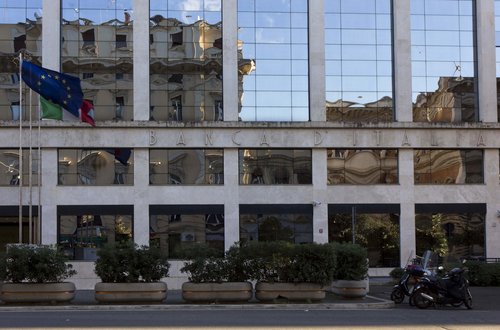Italy's largest bank should reduce the bulk of its non-performing loans according to the European Central Bank's advice. Actually, owners and creditors should bear the losses. But an injection of public funds through a backdoor of bank regulation is now on the table. As long as the funds were used for restructuring, this would be harmless as could be seen from the US approach to bank recapitalization.

Choice between one of two evils
The Eurozone's largest banks contain at least 780 billion of non-performing loans in their balance sheets – approximately 16 percent concentrate on Italian banks. Their amount of problem loans has risen by 15 percent during the last two years, while the other Eurozone banks have reduced their stock of non-performing loans by more than 17 percent. The European Central Bank (ECB) has advised the largest Italian bank Banca Monte dei Paschi di Siena to reduce its problem loans by 10 billion Euro according to media reports. But even this large amount of problem loans is only the tip of the iceberg: In Banca's balance sheet are 47 billion Euro of non-performing loans located.
The new European bank resolution rules call stock owners and creditors to bear losses of at least 8 percent of the bank's total assets, which would be at least 13.5 billion Euro in this case. The Italian government now wants to use a regulatory back door for injecting public funds into Banca in order to spare creditors, i.e. companies and households. Deposits of companies and households up to 100,000 Euro are excluded from a bail-in, however, companies typically hold larger amounts of deposits at their bank account in order to pay employees and suppliers. A creditor bail-in could, thus, force companies to run into financial difficulties.
But precisely this complicates bank resolution. In the end, it is a choice between one of two evils: on the one hand the creditor bail-in has negative side effects, on the other hand public funds injections might reduce reform efforts – and the Italian government did not restructure its banking sector in the past.
But there is an alternative left on the table, which is the US approach to bank restructuring: At the height of the financial crisis the US government used public funds, not to rescue banks, but in order to restructure them. This approach to bank restructuring was so successful that the US government could privatise the nationalized banks with a profit in the end. For Italy's banking sector problems there is one solution left, which is brave reforms like this.
More on the topic

Energy consumption: Targets threaten efficiency of EU climate and decarbonization policies
Increasingly stringent energy consumption targets for the year 2030 flanked by national energy efficiency targets are about to being agreed at the EU level. A study by the German Economic Institute (IW) shows that these targets when applied to ETS-sectors, ...
IW
(Un-)Fair taxation of the digital economy
The EU would neglect its responsibility for the mismatch of tax policies among member states by implementing a taxation of the digital economy. It would translate into a tax increase for a specific group of companies, which would make the classification of ...
IW